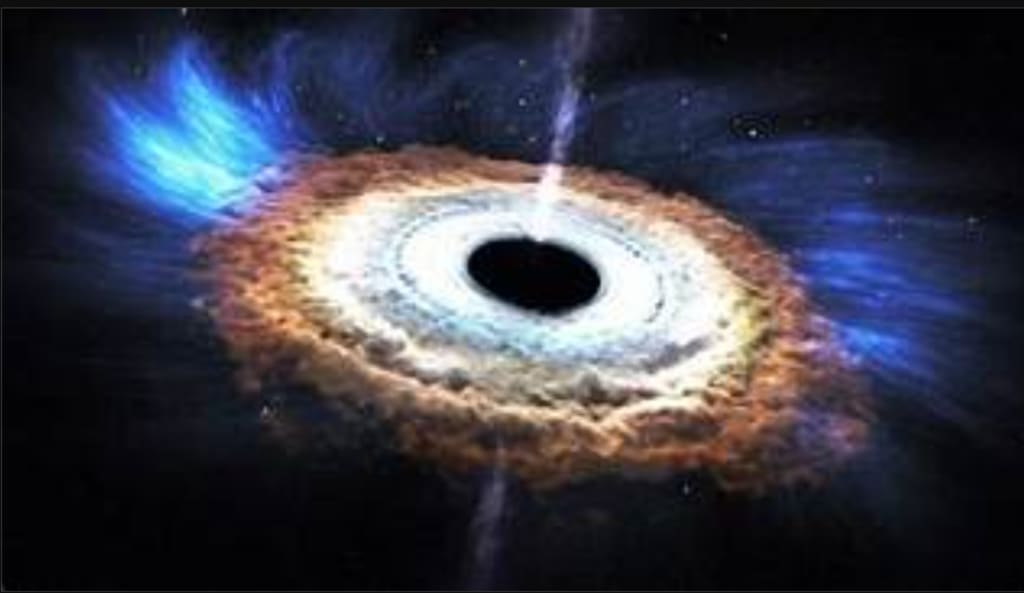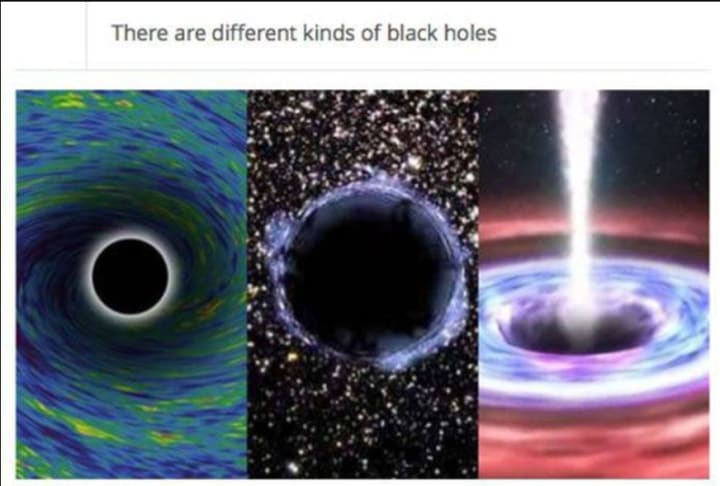
A black hole is one of the most fascinating and mysterious objects in the universe. To understand a black hole, let's start with some basics about gravity, stars, and space.
Gravity and Stars
Gravity is the force that pulls objects toward each other. It's what makes apples fall from trees and keeps the planets orbiting the Sun. The more massive an object, the stronger its gravity.
Stars, like our Sun, are massive balls of hot, glowing gas. They shine because they produce energy through nuclear fusion, a process that occurs in their cores. Stars have a lot of mass, so they have strong gravity pulling everything towards their center. However, the energy from fusion creates pressure that pushes outward, balancing the inward pull of gravity.
Birth of a Black Hole
A black hole forms from the remnants of a massive star that has ended its life cycle. Here’s a simplified version of how this happens:
1. Stellar Life Cycle:
Stars live for millions to billions of years. During most of a star's life, the outward pressure from fusion in its core balances the inward pull of gravity.
2. Collapse:
When a very massive star (much larger than our Sun) runs out of nuclear fuel, it can no longer produce the pressure needed to counteract gravity. The core collapses under its own weight, causing a supernova explosion. This explosion blows away the outer layers of the star, but the core keeps collapsing.
3. Formation of a Black Hole:
If the core left behind after the explosion is still very massive (more than about three times the mass of the Sun), the gravitational collapse continues until all the matter is squeezed into an incredibly small space. This region of space where gravity is so strong that nothing, not even light, can escape is called a black hole.
Key Features of a Black Hole
1. Event Horizon:
This is the boundary surrounding a black hole. Once something crosses the event horizon, it cannot escape the black hole’s gravity and will be pulled inward. It’s like a one-way door; you can enter, but you can’t get out.
2. Singularity:
At the very center of a black hole is the singularity, where the mass of the collapsed star is concentrated. The singularity is a point of infinite density and zero volume where the laws of physics as we know them break down.
3. Accretion Disk:
Sometimes, a black hole pulls in material from its surroundings, such as gas and dust. This material forms a rotating disk around the black hole called an accretion disk. As the material spirals inwards, it heats up and emits X-rays and other radiation, which we can detect with telescopes.

Black Holes in the Universe
There are different types of black holes based on their mass:
1. Stellar-Mass Black Holes:
These black holes form from the remnants of massive stars and typically have a mass between 3 to 20 times that of the Sun.
2. Intermediate-Mass Black Holes:
These are more mysterious and have masses between 100 and 100,000 times that of the Sun. They might form from the merging of smaller black holes or direct collapse of massive clouds of gas.
3. Supermassive Black Holes:
Found at the centers of galaxies, including our Milky Way, these black holes have masses ranging from millions to billions of times that of the Sun. Their formation is still not entirely understood, but they play a crucial role in the evolution of galaxies.
Observing Black Holes
Although black holes themselves are invisible, we can detect them by observing their effects on nearby objects and light. For example:
Gravitational Effects:
We can see stars orbiting around something invisible with immense gravity. This tells us a black hole is there.
Radiation:
Material falling into a black hole heats up and emits radiation, particularly X-rays, which can be detected by telescopes.
Conclusion
In summary, a black hole is a region of space where gravity is so strong that nothing can escape from it. They form from the remnants of massive stars that have collapsed under their own gravity. While we can’t see black holes directly, we can observe their effects on the surrounding space and matter. These cosmic phenomena challenge our understanding of physics and the universe, making them a fascinating area of study for scientists.
About the Creator
Angel Sri
Passionate creator weaving words into captivating stories. Transforming ideas into engaging content that sparks curiosity and connection.
Enjoyed the story? Support the Creator.
Subscribe for free to receive all their stories in your feed. You could also pledge your support or give them a one-off tip, letting them know you appreciate their work.






Comments (1)
I've always been fascinated with black holes! I enjoyed reading this!